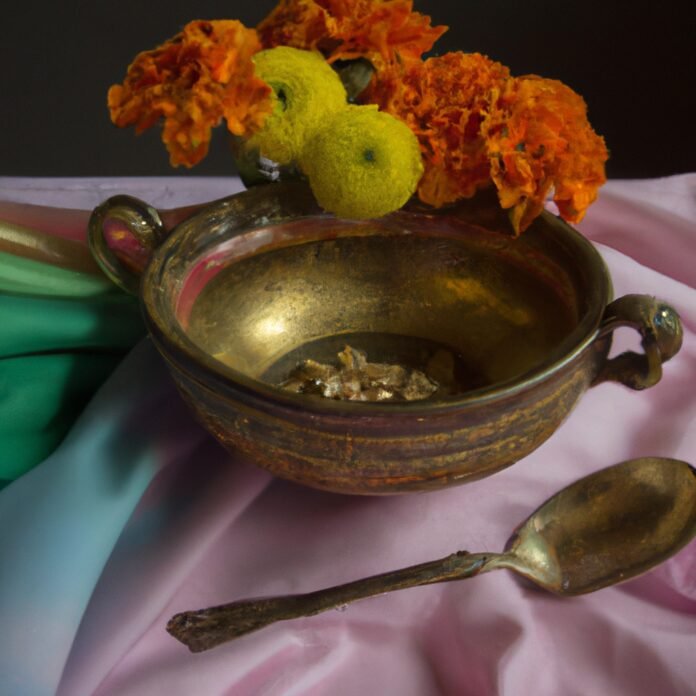The concept of beauty and health during the Middle Ages was a truly fascinating one. With a plethora of illnesses, dangerous treatments, and beliefs, the notion of beauty and health in the Middle Ages had a unique, if not primitive, approach – one that was grounded in superstitions, religion, and tradition. From secret potions to the use of plant-based remedies, the Medieval commitment to health was an integral part of life during this period of time.
1. Healthy Habits of the Middle Ages
In the Middle Ages, people took good care of their health, resulting in improved health, longevity and overall wellbeing. They practised healthy habits every day that have relevance and importance even today.
Diet And Nutrition:
- A varied plant-based diet keyed to the seasons formed the basis of an excellent healthy diet.
- Freshly picked fruits, greens, nuts, whole grains, legumes and certain root vegetables were included in their meal plans.
- Consumption of red meat was limited, as it was relatively expensive and not available all year round.
Hygiene & Cleanliness:
- The medieval people believed that better hygiene and cleanliness could prevent many illnesses therein.
- They used every available resource like herbs, flowers, and perfumes to keep their bodies clean.
- They also made use of essential oils and flowers in hot baths for cleansing their bodies and for relaxation.
Sleep:
- Adequate restful sleep was highly recommended so people would stay healthy and productive.
- It was believed that deep and long sleep was key to help restore energy and focus.
- A regular sleep schedule was practiced, with eight hours of sleep encouraged every night.
2. Cultivating Beauty in Olden Days
In the days of old, beauty was much more than just a face. It was a deep contemplation of grace and inner peace that allowed one to cultivate true beauty.
- Bathing Rituals – Ancient practices, such as aromatherapy, hot and cold baths, body scrubs, and herb infused steam sauna help one to achieve proper physical hygiene.
- Skin Care – Honeys and oils mixed with natural ingredients were applied to the skin to prevent it from drying and aging.
- Makeup – Natural ingredients such as crushed shells, egg whites, and beeswax were used as makeup to enhance features.
- Body Care – Oils and creams with natural fragrances, such as lavender and rosemary, were used to provide relaxation and revivification.
In those days, beauty was nurtured from within with the help of herb infused elixirs. These elixirs could be drunk and/or used to massage the body and relieve stress. Ancient practices, like yoga, tai chi, and qigong, also assisted in detoxifying the body and promoting inner peace. All these practices combined to meet the standards of physical beauty of that era.
Not only was the body attended to, but so was the mind. Aromatherapy, meditation, and visualizations were detailed techniques used by society to reach a higher level of inner beauty . Here, the soul was revealed and the concept of connecting with the divine was explored.
In addition, makeup, hair products, and other grooming treatments were found helpful in maintaining good looks. Herbal concoctions used as dyes for hair were also popular. With today’s more modern practices, it’s easy to forget how our ancestors did things. Yet, by looking back to the olden days, we can still find beauty and peace through these ancient beauty rituals.
3. Unforeseen Benefits of Medieval Diets
Perhaps the most overlooked benefit of medieval diets is that they often included plenty of fresh fruits and vegetables. Many of these foods were grown locally and included a variety of seasonal produce. Diets were typically high in fiber, which was good for digestive health. Eating these foods also provided important minerals and vitamins.
Medieval diets also contained plenty of whole grains. Bread was a staple and would be made with grain-based flour such as wheat, barley, and rye. The proteins and minerals contained in these grains helped to provide complete nutrition.
One of the major benefits of the medieval diet was the abundance of probiotics. Beneficial bacteria were present in fermented foods like sauerkraut, kefir, and yogurt. This provided an important source of gut health and overall nutrition.
Finally, the medieval diet relied heavily on plant-based proteins such as beans, legumes, and nuts. These foods were full of essential vitamins, minerals, and essential fatty acids. This provided a balanced and nutritious diet that could sustain people over long periods of time.
4. Traditional Medicines and Practices of Healthy Living
An age-old approach to healthy living has been the implementation of traditional medicines and practices. This tried-and-true method of achieving health and balance can be found around the globe and has sustained many families for generations.
Traditional medicines come in many forms. For example, some cultures may utilize herbal remedies, while others may turn to natural treatments or spiritual healing. No matter the route chosen, it is important to remember that many traditional practices are part of a healthy lifestyle.
To start, here are some of the traditional medicines and practices that may help maintain a healthy lifestyle:
- Herbal remedies: Used to treat common illnesses such as colds and coughs.
- Natural treatments: Utilizing naturally occurring plants, herbs, and minerals. Examples include essential oils, acupuncture, yoga, and tai chi.
- Spiritual healing: Paths of faith, such as prayer and meditation, that work to balance the body and soul.
Ultimately, it is wise to discuss any traditional medications and practices with a trusted medical professional that understands your culture. This precautionary step will help to ensure that the herbal remedies and natural treatments you are using are safe and helpful for achieving optimal health.
5. Lessons to be Learned from Ancient Beauty Regimens
As we age, it is important to take extra special care of our skin. Ancient cultures had a different approach to beauty and took pride in their personal appearance. By looking back on some of their practices, we can learn how to care for our skin better in modern times.
Firstly, many ancient beautification traditions focused on oil-based treatments. Applying facial oils, such as olive or avocado, seals the moisture in and helps to reduce wrinkles. Ancient Egyptians also kept their skin hydrated and glowing with Castor oil facial masks. adding moisturizing and antibacterial properties.
Secondly, herbal remedies are an ancient beauty secret that can be beneficial for us today. Plants like Aloe Vera and Turmeric contain calming and healing properties that can help fade age spots and acne scars. Herbs like Jasmine and Ginseng are known to help delay aging and make the skin look more radiant and youthful.
Here are some of the most significant lessons we can learn from ancient beauty regimens:
- Keeping the skin well hydrated by applying natural oils and moisturisers
- Making herbal remedies and masks part of your daily beauty routine
- Avoiding harsh chemical-based products
- Creating a natural and simplified beauty regimen with fewer products
By taking the time to learn what worked for ancient cultures, we can apply the same knowledge to our modern beauty regimens. Our skin will thank us for it in the long run.
Beauty and Health in Medieval Times was indeed a complicated proposition. From hygiene practices to beauty and cosmetic treatments, you can glimpse at the ever-evolving history of human vanity without having to time travel back in time. We hope this article gave you a comprehensive look at the care practices of this unique period in time.




